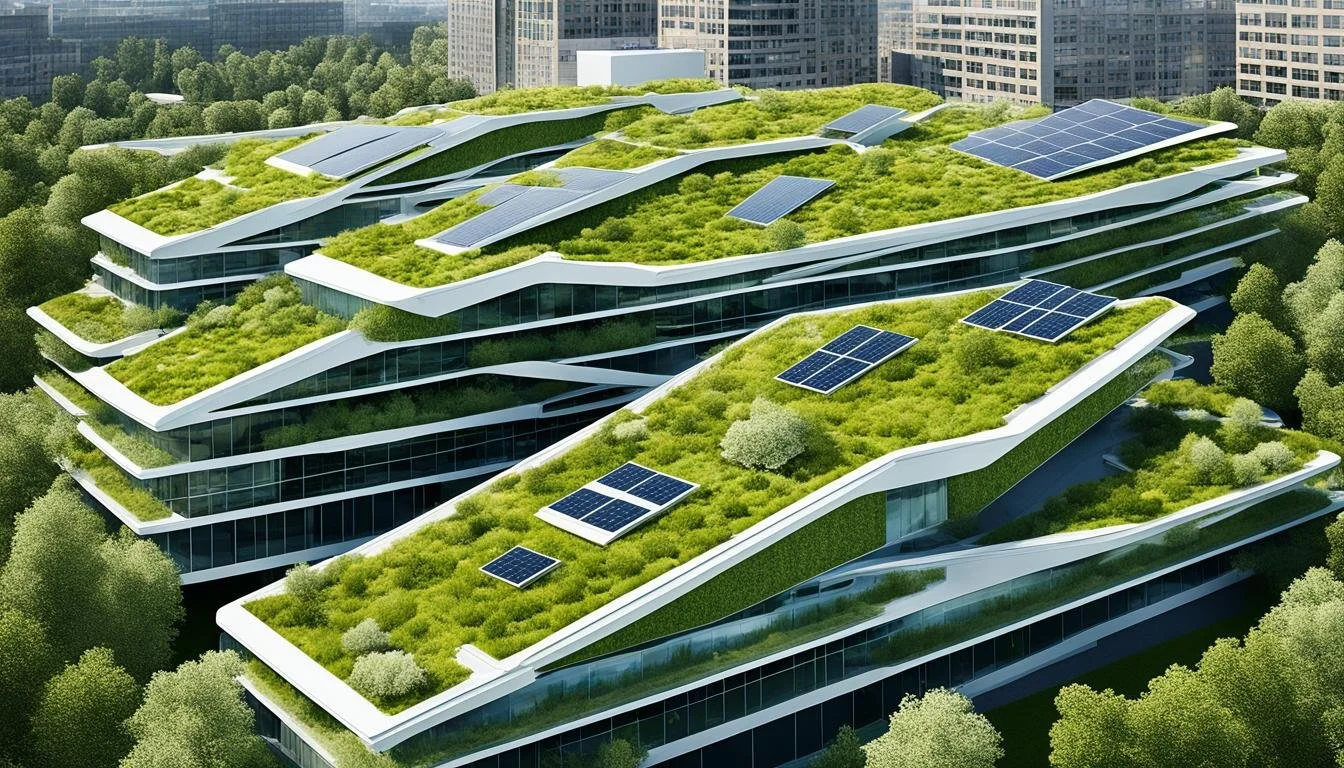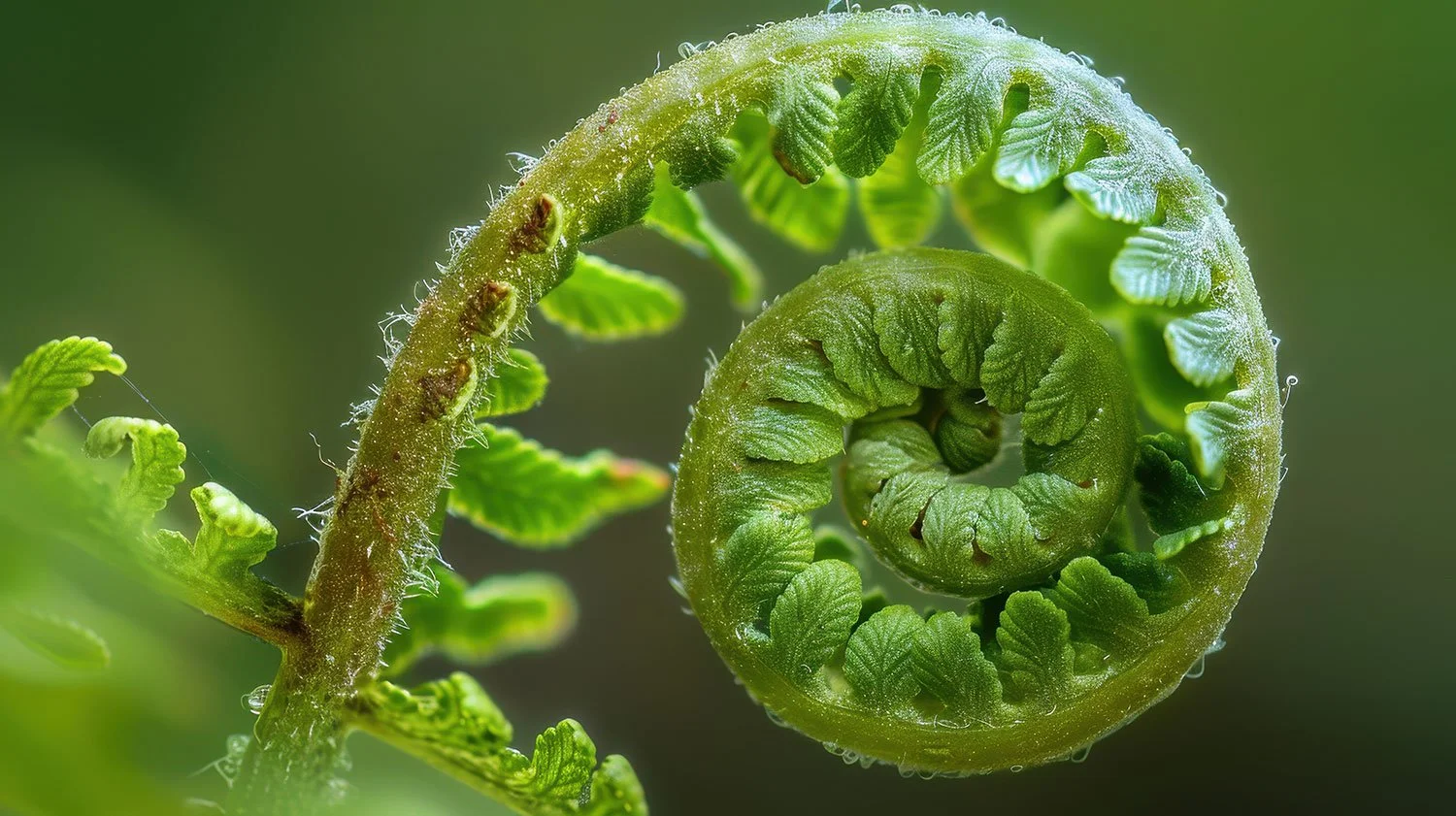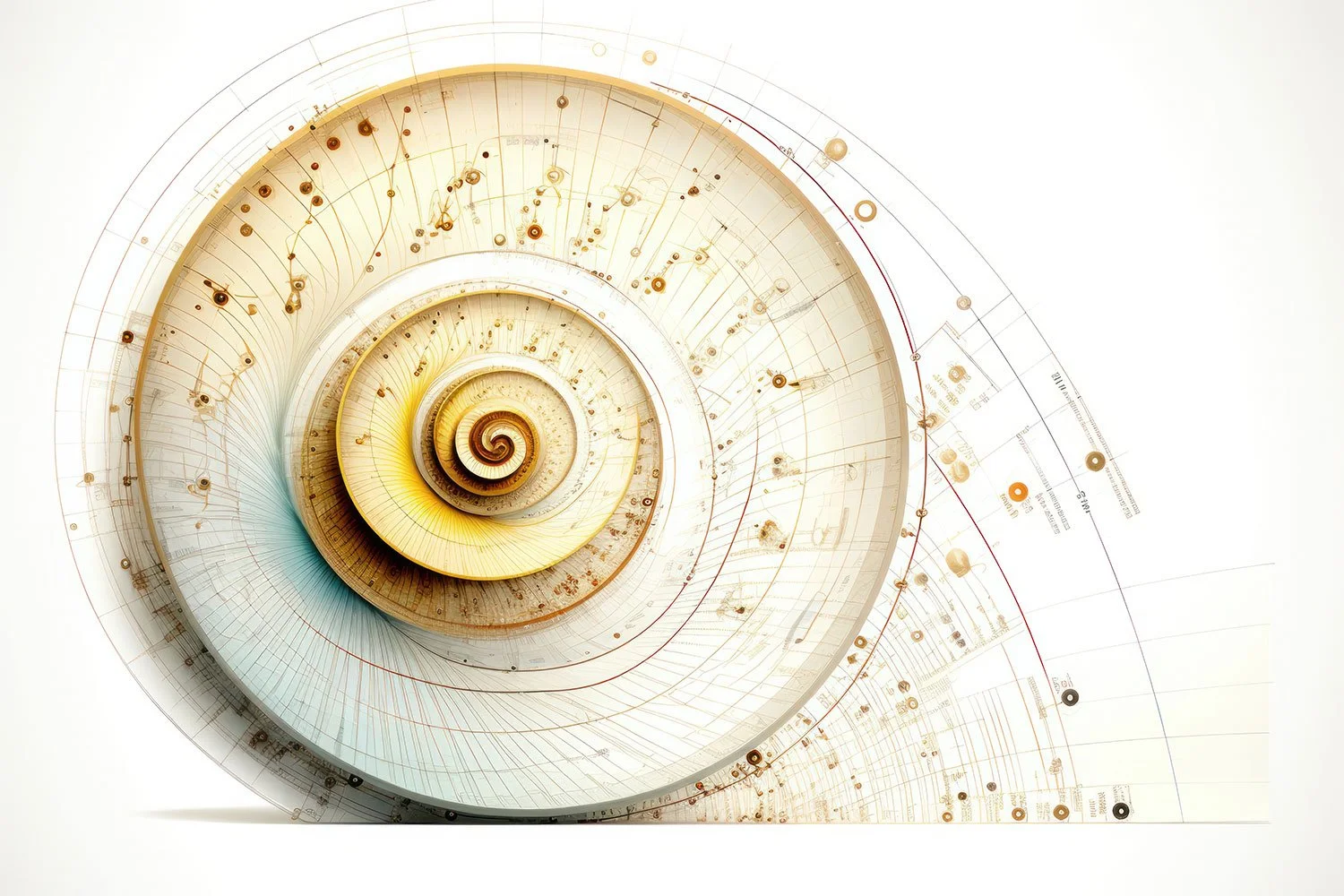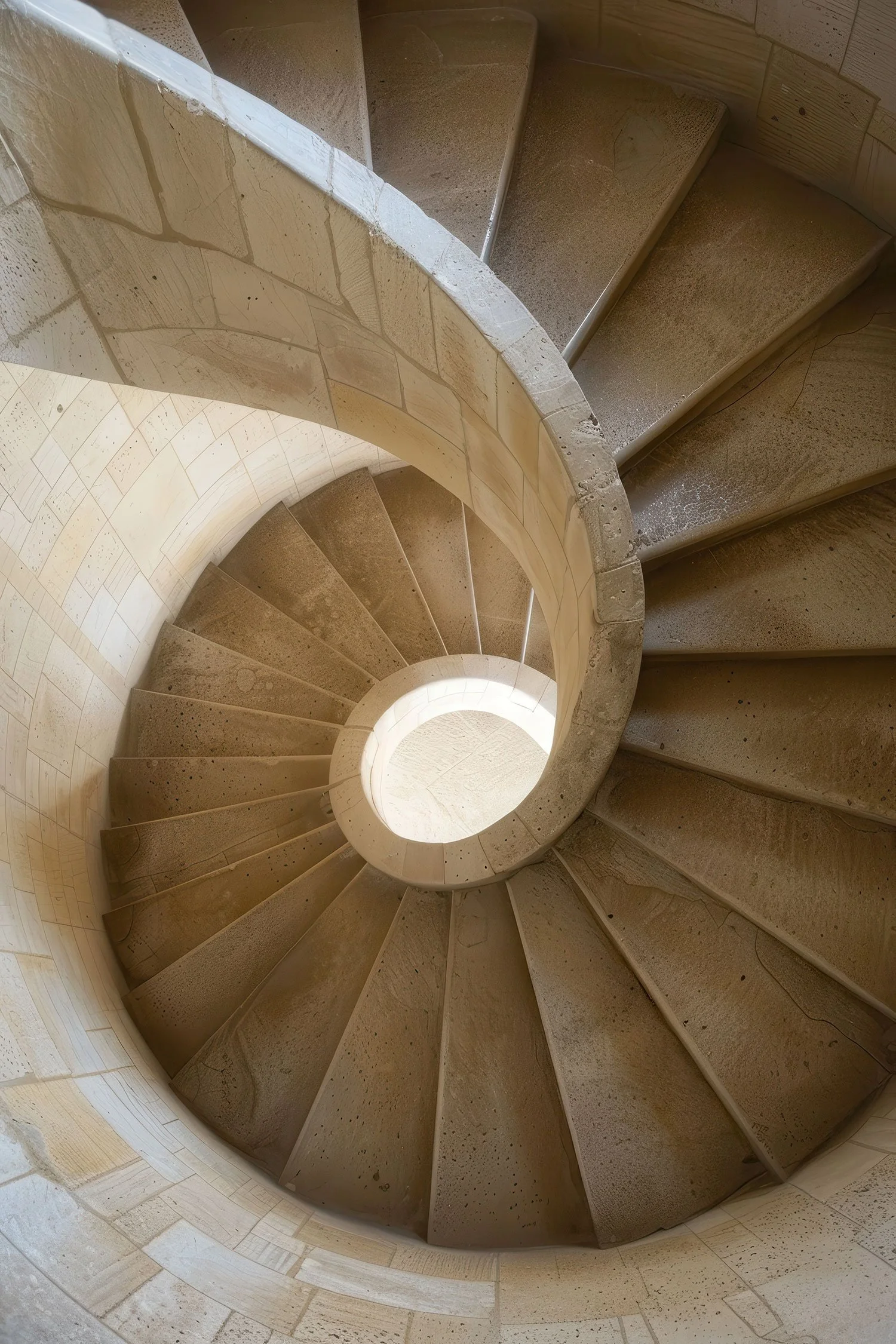Nature doesn’t waste. It doesn’t overbuild, overheat, or overcomplicate. Every leaf, hive, and nest is used to perfect efficiency - systems that have evolved over millennia to balance form and function. So why, when we design our homes, do we so often ignore these principles?
Take a moment to consider this: the structure of a tree, the self-cooling mechanism of a termite mound, or the intricate pattern of a seashell. These aren’t just beautiful - they’re smart. They adapt, endure, and thrive in harmony with their surroundings. What if our homes could do the same? What if they could work with nature instead of against it?
Complex Networks: Drawing inspiration from nature's intricate frameworks, this design explores the structural beauty and efficiency of interconnected systems, as seen in neural networks, mycelium, and biological architecture. A celebration of biomimicry's potential to innovate and inspire.
The practice of drawing inspiration from natural systems and patterns - has moved beyond novelty. It’s shaping modern architecture and home design in profound ways. Examples are green roofs that mimic the insulation of a forest floor or facades that breathe like the skin of a living organism.
Jean Nouvel and OXO Architects design mixed-use complex inspired by the shape of a mountain. Image via Compagnie de Phalsbourg
This isn’t just about aesthetics or sustainability. It’s about designing homes that nurture us, that connect us to something bigger than ourselves.
What is Biomimicry in Design?
Biomimicry isn’t just another buzzword in design - it’s a philosophy that asks us to stop reinventing the wheel and start learning from the masters of efficiency: the natural world. At its core, biomimicry is about emulating the forms, processes, and ecosystems that nature has perfected over billions of years.
Architects have taken inspiration from natural geometry, using it to design buildings that feel harmonious and balanced, while also being structurally sound.
The Living, based in New York, in collaboration with Ecovative Design, a company that produces mycelium bricks to replace plastic, built a 13-meter high tower in the courtyard of MoMA. Image © Andrew Nunes
Or consider the honeycomb. Its hexagonal structure isn’t just visually striking; it’s an engineering marvel - maximizing strength while minimizing material use. This principle has been applied to lightweight yet strong building materials, revolutionizing the way we construct everything from walls to furniture.
This is a futuristic building with a honeycomb structure.
The Beijing Aquatic Center: inspired by the honeycomb, its hexagonal design is not only visually stunning but also a testament to biomimicry - harnessing nature’s engineering brilliance to create lightweight yet resilient structures.
But biomimicry isn’t just about forms; it’s about systems. Termite mounds in Africa, for example, have inspired architects to create buildings that naturally regulate temperature, eliminating the need for energy-intensive air conditioning. These mounds use a self-regulating system of ventilation tunnels, demonstrating how simple yet ingenious natural processes can solve complex problems.
Then there’s the ecosystem-level inspiration: a green roof doesn’t just sit on top of a building like an afterthought. It functions as a living, breathing system - cooling the structure, improving insulation, and providing habitats for birds and insects. Similarly, facades inspired by the scales of a pinecone can expand and contract based on temperature, adapting to the environment and reducing energy consumption.
A conceptual model of a facade inspired by pinecone scales, showcasing the potential of biomimicry in architecture. Designed to expand and contract with temperature changes, this facade could reduce energy consumption while blending functionality with nature-inspired aesthetics. While not a real-world example yet, it illustrates the possibilities of adaptive design in sustainable building practices.
Biomimicry also challenges us to rethink our relationship with waste. Nature doesn’t waste anything; every byproduct becomes a resource for something else. This principle has influenced circular design practices, where homes are built to minimize waste during construction and even at the end of their life cycle.
What makes biomimicry so powerful isn’t just its practicality; it’s its ability to connect us to something greater. There’s something profoundly humbling - and inspiring - about drawing wisdom from nature. It reminds us that design isn’t just about what we build; it’s about how we live and how we can exist more harmoniously within the world around us.
Iconic Examples of Biomimicry in Architecture
Nature has long been the blueprint for some of the world’s most innovative architectural designs. By mimicking its patterns, structures, and systems, architects have not only achieved aesthetic beauty but also created solutions to complex challenges.
The Cathedral of Santa Maria del Fiore, Florence: A testament to biomimicry in architecture, the dome's double-shell design reflects nature’s principles of efficiency and strength, akin to a bird’s nest or honeycomb. Its ventilation system and herringbone brickwork echo nature's ability to optimize structure and airflow, blending human ingenuity with the wisdom of natural forms.
Take green roofs, for example. These living systems, inspired by forest floors, do far more than just look pretty. They regulate temperatures, reduce stormwater runoff, and even support biodiversity - all while improving insulation and lowering energy costs. Cities like Singapore, with its Gardens by the Bay and rooftop gardens on countless skyscrapers, demonstrate how biomimicry can seamlessly integrate urban living with nature.
Green roofs, like these, do more than beautify the skyline. Inspired by nature’s ecosystems, they regulate temperatures, manage stormwater, and foster biodiversity, proving that sustainable design can be as functional as it is striking.
Singapore’s Gardens by the Bay exemplify the fusion of urban innovation and nature. From towering vertical gardens to lush green rooftops, these designs are a testament to biomimicry’s ability to transform cityscapes into thriving ecosystems, balancing beauty with sustainability.
Then there’s the concept of organic architecture, where the built environment blends so effortlessly with its surroundings that it feels like it has always been there. Frank Lloyd Wright’s Fallingwater is a masterclass in this philosophy. The house doesn’t just sit by the waterfall - it becomes part of it, mirroring the natural flow of the water and surrounding landscape. Antoni Gaudí’s Casa Batlló in Barcelona offers another stunning example. Its curved lines and vibrant mosaics evoke the beauty of coral reefs, making the building feel alive, almost breathing.
Casa Batlló in Barcelona, designed by Antoni Gaudí, is a testament to the philosophy of organic architecture. Its flowing lines and intricate mosaics mimic the vibrant beauty of coral reefs, making it feel as though the building is a living, breathing part of its environment.
But biomimicry isn’t just about appearances; it’s about functionality. Look at the Eastgate Centre in Zimbabwe, a commercial building inspired by termite mounds. By imitating the natural ventilation systems of these structures, the building maintains a stable indoor temperature without relying heavily on air conditioning - a breakthrough in sustainable design.
Incorporating nature-integrated facades is another way biomimicry is reshaping our homes and cities. Living walls, like those pioneered by French botanist Patrick Blanc, are more than just decorative - they purify air, reduce noise pollution, and act as natural insulators. These facades mimic the vertical growth of plants on cliffs or tree trunks, creating functional beauty that benefits both people and the planet.
This modern rooftop garden illustrates the transformative power of biomimicry. By mimicking vertical growth in nature, it combines functional beauty with environmental benefits, purifying the air, reducing noise pollution, and enhancing insulation. It’s a prime example of how nature-integrated facades can reshape urban living.
These examples remind us that nature’s designs are timeless, efficient, and endlessly inspiring. They challenge us to think beyond traditional building methods and consider how every element - every wall, roof, and window - can work in harmony with its environment.
The Benefits of Biomimicry in Homes
What if your home could breathe like a living organism, adapt to its surroundings, and nurture your well-being? Biomimicry turns these what-ifs into possibilities, rethinking homes not as static structures but as dynamic, responsive environments that work with nature rather than against it.
One of the most immediate benefits of biomimicry is sustainability. By mimicking nature’s efficiency, we can significantly reduce energy consumption and waste. Green roofs, for instance, function like forest floors - insulating buildings, reducing stormwater runoff, and even cleaning the air. But biomimicry goes beyond rooftops. Neri Oxman’s Silk Pavilion exemplifies how natural systems can inspire construction methods, blending traditional and biological processes to create structures that are as sustainable as they are beautiful.
his serene biomimicry-inspired design showcases how architecture can mimic nature’s adaptability and nurturing qualities. From the cascading greenery to the seamless integration of water and light, this space embodies the potential of sustainable, responsive living environments. It’s a vision where beauty, sustainability, and well-being converge to redefine the essence of a home.
Biomimicry also enhances well-being. Research shows that connecting with nature - whether through materials, light, or views - can lower stress and improve mental health. Imagine a home with walls inspired by pinecone scales, expanding and contracting to regulate indoor temperatures. Such innovations, like those seen in Oxman’s Aguahoja project, don’t just replicate nature’s forms; they integrate its functionality, creating spaces that are not only efficient but calming and restorative.
Finally, biomimicry offers a new way to think about beauty. Natural patterns, like the Fibonacci sequence, create harmony and balance that resonates deeply with us. But what exactly is the Fibonacci sequence, and why does it matter in design?
The Fibonacci sequence is a mathematical series where each number is the sum of the two preceding ones: 0, 1, 1, 2, 3, 5, 8, 13, and so on. When plotted visually, it forms spirals that mirror natural phenomena like nautilus shells, sunflower seeds, and galaxies. This sequence is not just visually captivating; it underpins the structural integrity and efficiency of nature's designs.
For example, the arrangement of leaves on a stem or the pattern of pinecone scales ensures optimal exposure to sunlight - a principle of efficiency and balance. When applied to architecture and design, Fibonacci-inspired structures evoke the same sense of harmony. They feel "right" to us because they echo the rhythms of the natural world.
Neri Oxman’s work reminds us that beauty in design isn’t just skin-deep; it’s embedded in the functionality and lifecycle of the materials and systems we use. From the spirals of a staircase to the curves of a fern, Fibonacci principles guide us toward designs that are not only aesthetically pleasing but also deeply functional, sustainable, and enduring.
The Fibonacci sequence, often seen in nature, forms the foundation of many natural patterns, like the spiral of a fern frond. This mathematical principle, which produces visually harmonious proportions, is a cornerstone of biomimicry, inspiring architects and designers to create spaces that feel balanced and organic.
The Fibonacci sequence visualized in design: this conceptual diagram illustrates how mathematical harmony guides everything from the growth of sunflowers to the curves in architecture. This principle isn’t just about aesthetics—it’s a formula for efficiency, strength, and balance, deeply resonating with human perception.
At its core, biomimicry bridges the gap between the built and natural environments, reminding us that the most innovative solutions are often the ones nature figured out long ago. The question is: how far are we willing to go to bring those lessons into our homes?
Inspired by the Fibonacci sequence, spiral staircases embody both beauty and function. Their precise curves are not only visually stunning but also structurally efficient, showcasing how biomimicry bridges the gap between nature’s logic and human ingenuity.
Challenges and Opportunities in Biomimicry
Embracing biomimicry in home design is a journey that intertwines innovation with nature's wisdom. While the path is inspiring, it presents challenges that require thoughtful navigation.
The Challenges
One significant hurdle is the cost and accessibility of biomimetic solutions. Innovations like living walls or green roofs, while environmentally beneficial, can be expensive to install and maintain. This financial barrier can deter homeowners and developers from embracing such designs. However, as technology advances and these solutions become more widespread, costs are gradually decreasing, making them more attainable for a broader audience.
Another challenge lies in translating the intricate designs of nature into practical applications. Nature's systems are complex and often difficult to replicate with human-made materials and methods. For example, mimicking the adaptive qualities of pinecone scales in building facades requires innovative materials and engineering approaches that are still under development. This complexity can slow the adoption of biomimetic designs.
Resistance to change also plays a role. Traditional building practices are deeply ingrained, and shifting to biomimetic approaches requires a cultural transformation within the construction industry. Overcoming scepticism and inertia demands education, advocacy, and a demonstration of the tangible benefits that biomimicry offers.
The Opportunities
Despite these challenges, the opportunities presented by biomimicry are compelling. As awareness of environmental issues grows, there is a burgeoning interest in sustainable design. Governments and urban planners are increasingly recognizing the value of integrating natural principles into the built environment. Cities like Singapore and Amsterdam are leading by example, implementing large-scale projects that harmonize urban living with nature. These initiatives not only inspire but also set a precedent for others to follow.
Moreover, the field of biomimicry is fostering a shift in perspective. It encourages us to view our homes and buildings not as isolated structures but as integral parts of a larger ecosystem. This holistic approach promotes designs that are adaptable, resilient, and in tune with their surroundings, leading to spaces that are not only functional but also nurturing to their inhabitants.
In embracing biomimicry, we are reminded that innovation often involves looking to the past - to the time-tested solutions that nature has refined over millennia. By learning from these natural designs, we can create homes and cities that are sustainable, beautiful, and harmonious with the world around us.
Let me know your thoughts on biomimicry.















